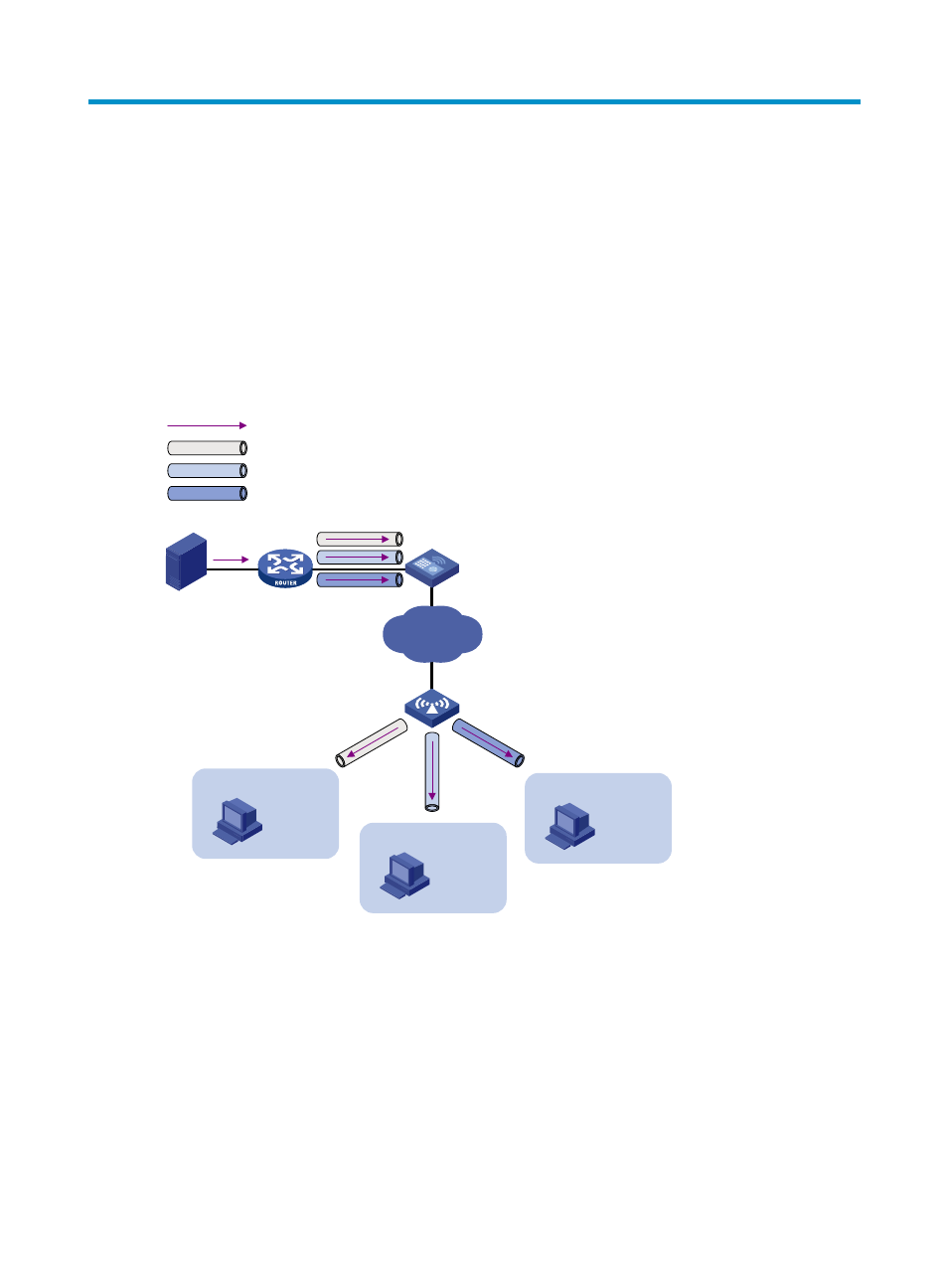Configuring ipv6 multicast vlans, Overview – H3C Technologies H3C WX3000E Series Wireless Switches User Manual
Page 101

92
Configuring IPv6 multicast VLANs
Overview
As shown in
, in the traditional IPv6 multicast programs-on-demand mode, when hosts (Host A,
Host B, and Host C) that belong to different VLANs require IPv6 multicast programs-on-demand service,
the Layer 3 device, Router A, must forward a separate copy of the multicast traffic in each user VLAN to
the Layer 2 device, AC. This results in not only waste of network bandwidth but also extra burden on the
Layer 3 device.
Figure 22 Multicast transmission without IPv6 multicast VLAN
The IPv6 multicast VLAN feature configured on the Layer 2 device is the solution to this issue. With the
IPv6 multicast VLAN feature, the Layer 3 device needs to replicate the multicast traffic only in the IPv6
multicast VLAN instead of making a separate copy of the multicast traffic in each user VLAN. This saves
the network bandwidth and lessens the burden of the Layer 3 device.
The IPv6 multicast VLAN feature can be implemented in a port-based IPv6 multicast VLAN.
As shown in
, Host A, Host B and Host C are in three different user VLANs. All the user ports
on the AC are hybrid ports. On the AC, configure VLAN 10 as an IPv6 multicast VLAN, assign all the user
ports to VLAN 10, and enable MLD snooping in the IPv6 multicast VLAN and all user VLANs.
Source
VLAN 2
VLAN 3
VLAN 4
AC
Receiver
Host A
Receiver
Host B
Receiver
Host C
Router A
MLD querier
IP network
AP
IPV6 Multicast packets
VLAN 2
VLAN 3
VLAN 4